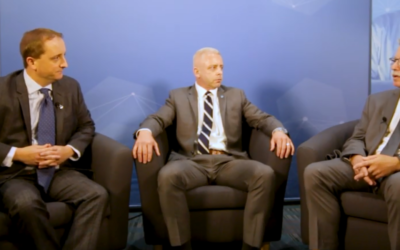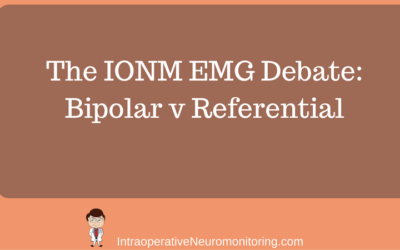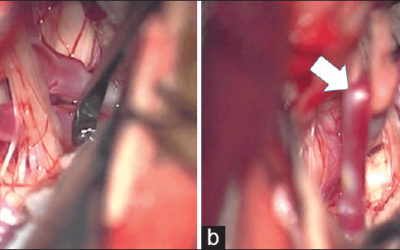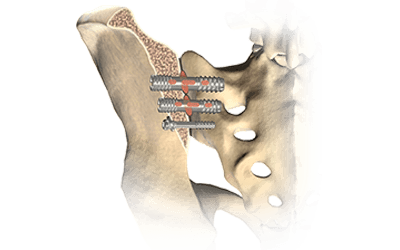How To Pass The DABNM Oral Examination
Let’s not kid ourselves here… the DABNM oral examination is one tough exam. I’ve taken clinical boards, national boards, Florida state boards and the boards for the diplomate in Chiropractic neurology (DACNB). All were much easier to do well on.
And it’s not because there’s more material to study, or that the material for intraoperative neuromonitoring is more difficult. Far from it. Part 4 national boards and the neurology diplomate covered a ton of material and you had to be able to interpret and diagnose in order to pass.
Plus, the DABNM oral boards only covers 2 kinds of cases. And you get to pick which one’s you want to do.
Why Is The DABNM Oral Examination So Damn Hard To Pass?
The biggest reason that very smart people fail is due to a lack of guidance on how to “really” prepare for this thing.
As of right now, I’ve been working on putting together my Pass The CNIM course (which is taking longer than anticipated. I’m on question #1014 right now. I apologize to those people I’ve been talking to who want early access to it).
After that, I’ll put together my Pass The DABNM course. But until I have time to get to it, I’ll try to post some tips on how to prepare and pass the DABNM oral examination portion.
NOTE: For those not taking the DABNM, please keep reading. These post should help you out as well since I’ll try to tie in my advice with some neuromonitoring content.
So here it is…
First Reason As To Why You Didn’t Pass the DABNM
When in the oral boards, being right isn’t enough. Especially since some of the questions they throw at you have no real “right” answer. In order to get full credit as being right, you have to be right in the right way.
Here’s a little formula to use as a guide when answering questions on the oral boards.
Let me give you a scenario and take a look at being right, but not right enough vs being right enough. This is a hypothetical scenario if the case you chose for the DABNM exam was a T4-L4 scoliosis.
DABNM examiner: I see you have MEPs set up for the lower extremity, and the surgeon is placing screws in the lumbar spine. What’s your alarm criteria for decrease in MEPs if the surgeon causes a peripheral nerve lesion… say at L4.
They know this one is a layup for a question, even though they phrased it to seem like most people have a criterion for MEP monitoring peripheral nerves (I’ll get into DABNM traps to avoid in a later post). There’s a pretty good chance that you already know MEPs aren’t great for peripheral nerves, but how you present your opinion can make or break your boards
Here’s what the “right” answer might sound like:
DABNM examinee: I don’t use MEPs for monitoring the nerve roots. I use EMG for that.
Right on, that’s a correct response. But that’s not enough for the DABNM exam. Here comes their rebuttal.
DABNM examiner: What makes you think that you shouldn’t use MEPs for peripheral nerves in that instance? You already have it set up, the pathways travel through the peripheral nervous system. I’m sure you’re aware that a severed nerve may have no response on your EMGs at all. Don’t you think it’s a little negligent to have that monitoring available, and simply say… I don’t use it for that?
Oh crap. They’ve taken something that was a simple answer on the CNIM and DABNM multiple choice test and made a big production out of it. My guess is there are two different ways to handle this.
Response #1 – Give them the deer in the headlights look.
Go ahead and take 5-10 seconds of your time and just stare at them like this. Then gloss over how that’s how everyone does it and you’ve been doing it that way for years.
And all this blah, blah, blahing isn’t really wrong, it’s just not right enough. If you try this method out a couple of times, you go from deer in headlights to roadkill.
Response #2 – There’s another way you can go. This post is getting a little wordy, so maybe you’ve already forgotten about my secret little formula to answering questions on the DABNM oral examination that allows you to be right enough. So here it is again…
And here’s what it might look like…
DABNM examinee: EMG activity gives the surgeon the luxury of immediate feedback, allowing for some preventative measure. Jimenez 2005 and Fan 2002 both described a lower incidence of radiculopathy postoperative when EMGs were used than when they were not, (Fan 0.9% vs 7.3%, Jimenez 2.9% vs 4.5%).
As for assessment of peripheral nerve root with motor evoked potentials, there is some sentiment of theoretical benefit. Yet there’s limited research indicating that TCMEPs are effective for monitoring nerve roots or are superior to monitoring of EMG or SSEP for lumbar cases. (Mok 2008) showed good sensitivity with a % decrease in MEPs amplitudes when a corresponding root was cut, but because the drop was so low, clinically you are likely to have a high level of false positives.
Now there was a study done by (Lyon 2009) that showed that when a nerve was undergoing a consistent stretch for 10 minutes, tcMEP and root stimulation thresholds were more sensitive to changes than free running EMGs. However a (Lyon 2011) showed that changing stimulating levels of tcMEP may offset the amplitude loss seen in tcMEP, causing an increase in false-negative. So until further research comes out with more conclusive evidence, using SSEP and EMG for peripheral lesions will produce better results.
And that’s how I prepared to answer questions. We all know what we do in the OR and I suspect we think it’s the best way of doing it, or we wouldn’t do it that way. So planning to study to prove not only what you do, but what you don’t do will help you give answers that are right enough. And when you’re right enough on your DABNM oral examination, you’ll be the one ready to take home the big prize.
Keep Learning
Here are some related guides and posts that you might enjoy next.
How To Have Deep Dive Neuromonitoring Conversations That Pays Off…
How To Have A Neuromonitoring Discussion One of the reasons for starting this website was to make sure I was part of the neuromonitoring conversation. It was a decision I made early in my career... and I'm glad I did. Hearing the different perspectives and experiences...
Intraoperative EMG: Referential or Bipolar?
Recording Electrodes For EMG in the Operating Room: Referential or Bipolar? If your IONM manager walked into the OR in the middle of your case, took a look at your intraoperative EMG traces and started questioning your setup, could you defend yourself? I try to do...
BAER During MVD Surgery: A New Protocol?
BAER (Brainstem Auditory Evoked Potentials) During Microvascular Decompression Surgery You might remember when I was complaining about using ABR in the operating room and how to adjust the click polarity to help obtain a more reliable BAER. But my first gripe, having...
Bye-Bye Neuromonitoring Forum
Goodbye To The Neuromonitoring Forum One area of the website that I thought had the most potential to be an asset for the IONM community was the neuromonitoring forum. But it has been several months now and it is still a complete ghost town. I'm honestly not too...
EMG Nerve Monitoring During Minimally Invasive Fusion of the Sacroiliac Joint
Minimally Invasive Fusion of the Sacroiliac Joint Using EMG Nerve Monitoring EMG nerve monitoring in lumbar surgery makes up a large percentage of cases monitored every year. Using EMG nerve monitoring during SI joint fusions seems to be less utilized, even though the...
Physical Exam Scope Of Practice For The Surgical Neurophysiologist
SNP's Performing A Physical Exam: Who Should Do It And Who Shouldn't... Before any case is monitored, all pertinent patient history, signs, symptoms, physical exam findings and diagnostics should be gathered, documented and relayed to any oversight physician that may...










